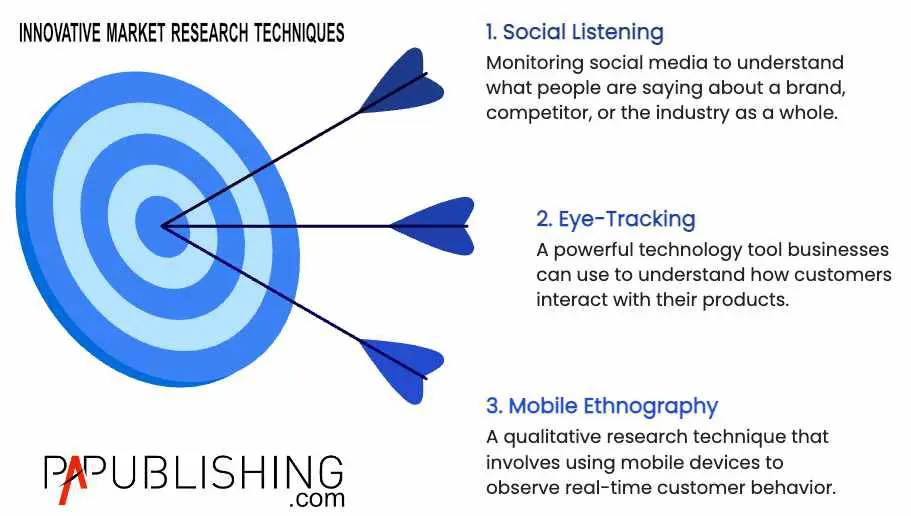Innovative Market Research Techniques for Enhanced Insights and Success
Market research is a crucial aspect of any successful business strategy. It allows companies to get a better understanding of their customers, industry trends, and competitor behavior. However, traditional market research techniques can be limiting, as they often rely on surveys and focus groups, which may not always result in accurate feedback. In today’s digital age, businesses need more innovative market research techniques that can provide a deeper understanding of consumer behavior and insights.
Small Business Basics: Market Research Techniques
Here are some innovative market research techniques that businesses can use to gain a competitive edge:
1. Social Listening: Market Research Techniques
Social media has become an integral part of people’s lives, and businesses can use it to gain insights into consumer behavior. Social listening involves monitoring social media platforms to understand what people are saying about a brand, competitor, or the industry as a whole. Through social listening, businesses can identify customer pain points, track sentiment and engagement, and even discover new product ideas. Companies can use software tools that can track social media platforms and generate meaningful metrics to analyze.
2. Eye-Tracking: Market Research Techniques
Eye-tracking technology is a powerful tool that businesses can use to understand how customers interact with their products. By using special software that tracks eye movements, businesses can determine what visual content attracts customers’ attention, what they ignore, and what they find confusing. This can help companies optimize their website design, marketing campaign, and overall branding strategy effectively. Eye-tracking technology has become more accessible and affordable, making it an innovative way to research the market and stay ahead of the competition.
3. Mobile Ethnography: Market Research Techniques
Mobile ethnography is a qualitative research technique that involves using mobile devices to observe customer behavior in real time. Businesses can gather data about customers’ behaviors, preferences, and habits using smartphones or other mobile devices. The mobile ethnography approach provides a holistic view of customer experience, improving the researcher’s understanding of their consumers’ mindset, and how they make purchasing decisions.

FAQs Market Research Techniques
Q: What is market research, and why is it important?
A: Market research is the process of gathering and analyzing data about the market, consumer behavior, competitor analysis, and industry trends. It is important because it helps businesses understand their customers, develop informed strategies, and stay competitive in the market.
Q: How can social listening help businesses better understand their customers?
A: Social listening allows businesses to track social media platforms to understand what people are saying about a brand, competitor, or the industry as a whole. This enables companies to identify customer pain points, track sentiment and engagement, and even discover new product ideas.
Q: How can eye-tracking technology help businesses optimize their website design, marketing campaign, and overall branding strategy?
A: Eye-tracking technology is a powerful tool that businesses can use to determine what visual content attracts customers’ attention, what they ignore, and what they find confusing. This information can help companies design their website and marketing content more effectively to appeal to more customers.
In conclusion, innovative market research techniques allow businesses to stay ahead of the competition, optimize their strategies, and understand their customers better. Social listening, eye-tracking, and mobile ethnography are just a few examples of innovative techniques that companies can use to gain deeper insights into customer behavior and preferences. By incorporating these powerful tools into their research, businesses can be more successful in the market and achieve their strategic goals.


